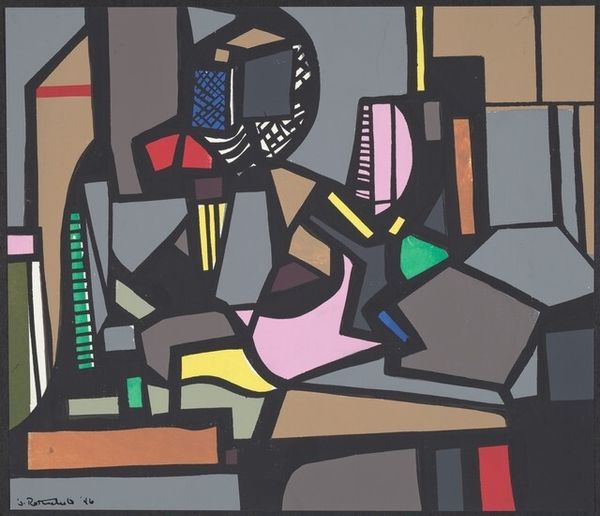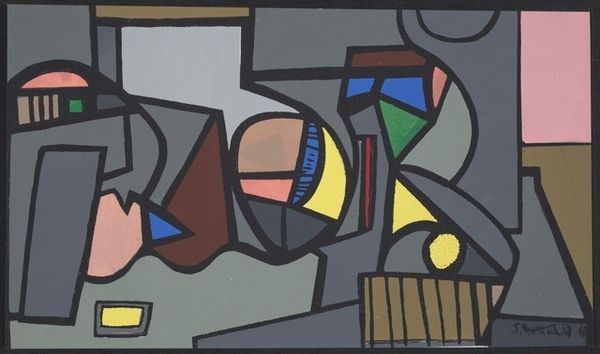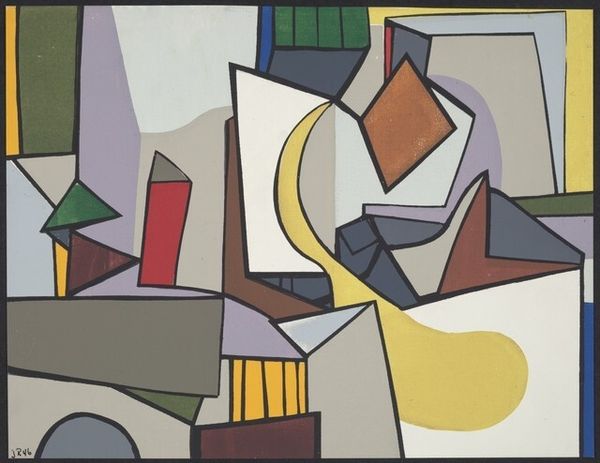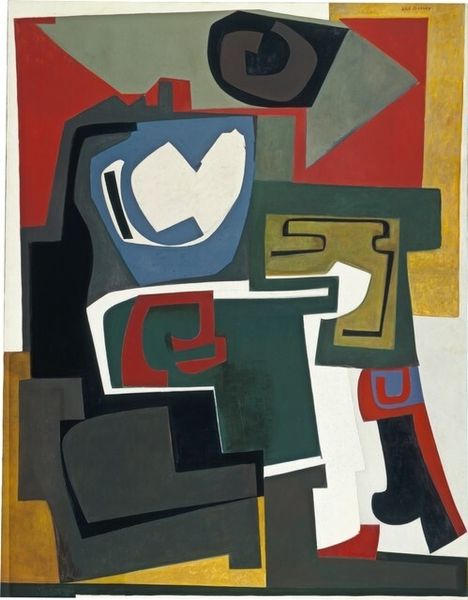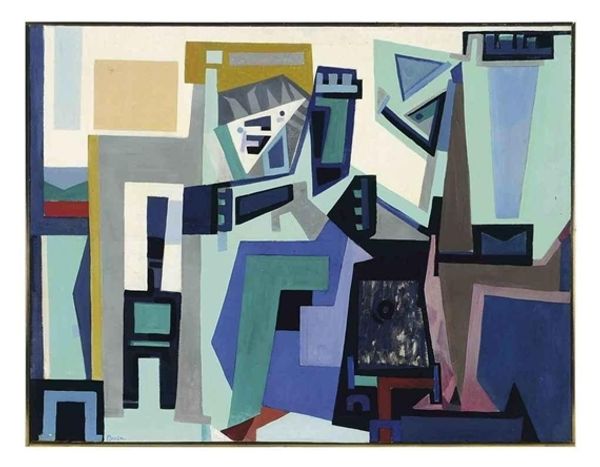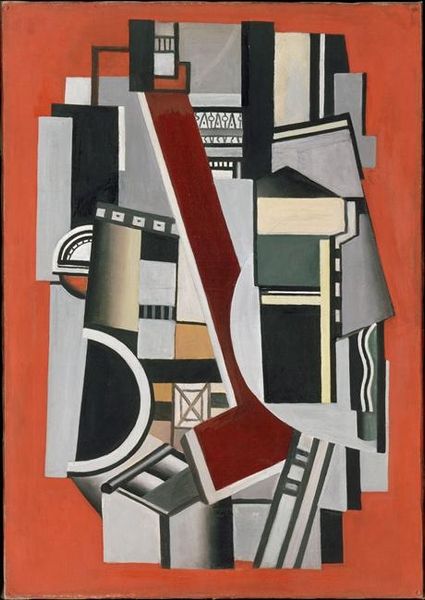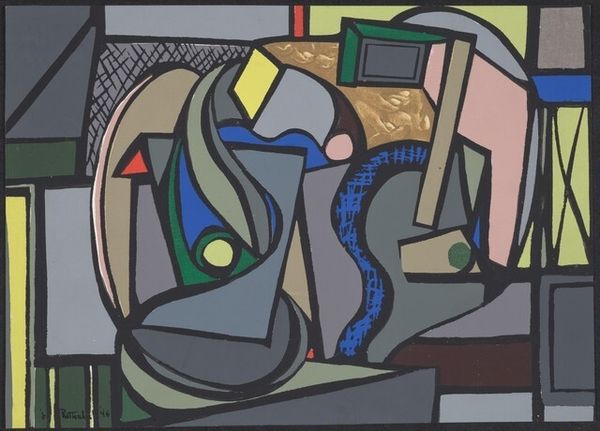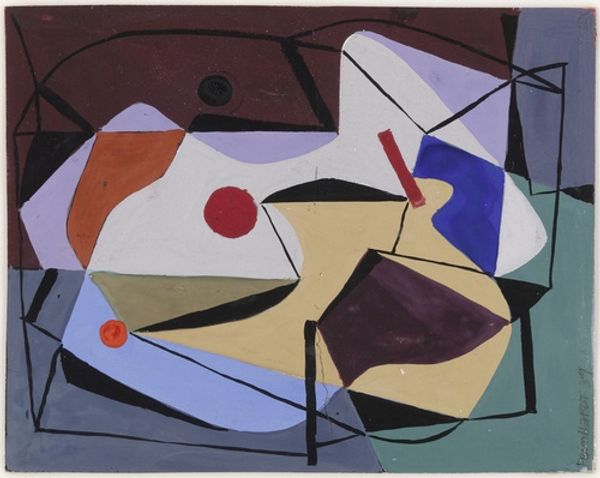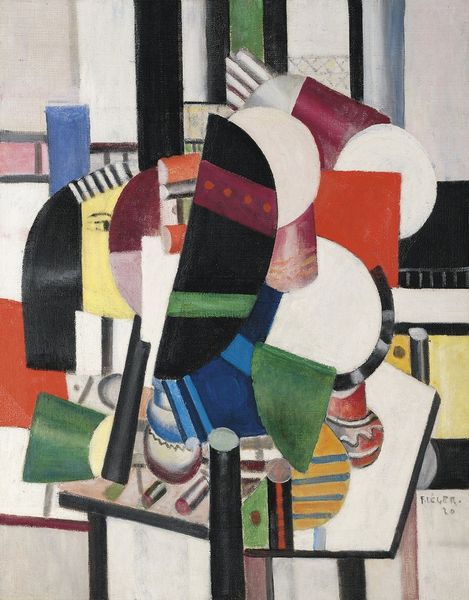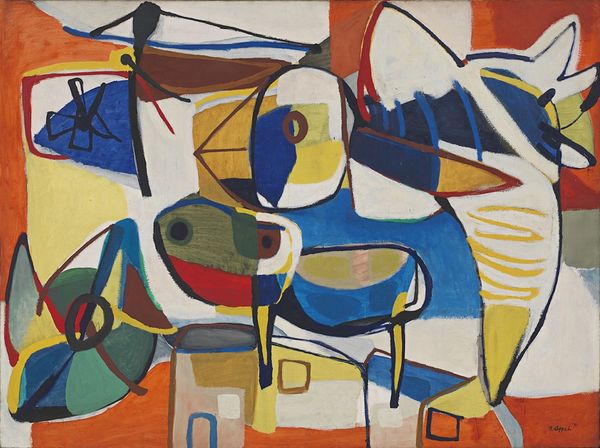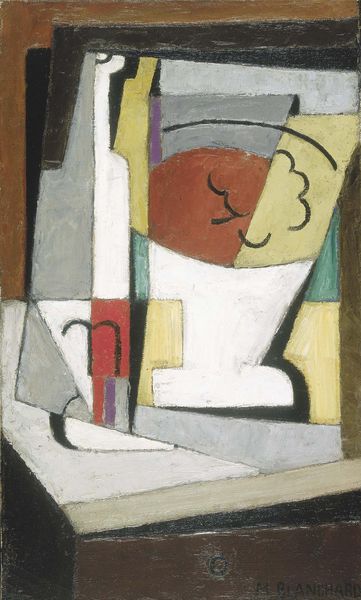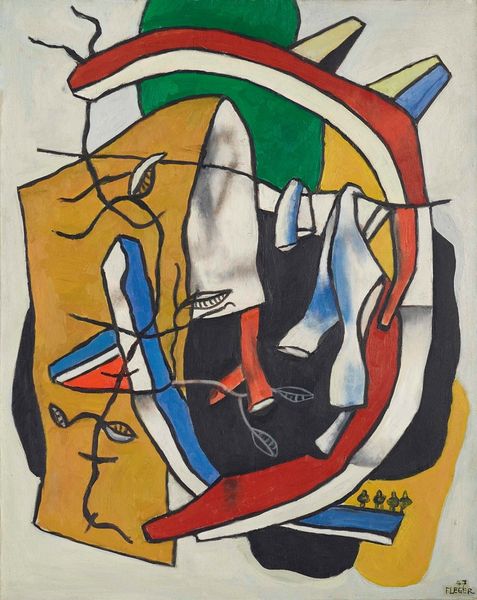
mixed-media, painting, print
#
abstract-expressionism
#
mixed-media
#
painting
# print
#
pop art
#
form
#
geometric-abstraction
#
abstraction
#
modernism
Dimensions: overall: 19.4 x 25.1 cm (7 5/8 x 9 7/8 in.)
Copyright: National Gallery of Art: CC0 1.0
Curator: Here we have an Untitled piece by Judith Rothschild, likely from 1946, a mixed-media work that showcases her exploration of abstraction. Editor: My immediate impression is that it's jarring. The colors feel muted and discordant. There's a real tension created by these colliding geometric forms, like a deconstructed still life. Curator: Indeed. Rothschild’s use of geometric abstraction reflects a post-war desire to break from tradition. The careful arrangements of shape and line, however, showcase a precise engagement with form and the picture plane. Look how the color and shape articulate specific spatial relationships. Editor: It's impossible, however, to separate the composition from the sociopolitical climate from which it emerged. Post-war art grapples with fractured realities; here we might ask how ideas surrounding women, labor, and the body were beginning to undergo drastic transformation in the immediate post-war years. Even an "abstract" image bears that social reality. Curator: I find such context potentially limiting. We can simply consider its relationship to the broader abstract expressionist movement and Modernist aesthetics. Focus, instead, on how line defines areas and delineates space, establishing boundaries between different geometric configurations. This highlights form over representation. Editor: I would argue that form and representation cannot truly be disentangled. Doesn’t that central triangular element, for example, when seen alongside more rounded elements, implicitly convey a coded, almost gendered message? Furthermore, note how constrained that composition is. The image, quite literally, stays within strictly defined boundaries. Curator: Perhaps, but her choice of the grid structure creates an almost mathematical or architectural dimension, reminiscent of early modernist ideals. Her unique formal style blends color and compositional order. The success of that is visible when simply bracketing external concerns. Editor: But art thrives at the intersections of many concerns! Ultimately, viewing Rothschild’s "Untitled" encourages us to acknowledge how the dynamics of art, form, history, and identity intertwine in compelling, often contradictory, ways. Curator: What I appreciate most, ultimately, is that it demands a deliberate reading of its parts. Editor: Yes, it provokes critical thinking about both art and society.
Comments
No comments
Be the first to comment and join the conversation on the ultimate creative platform.
